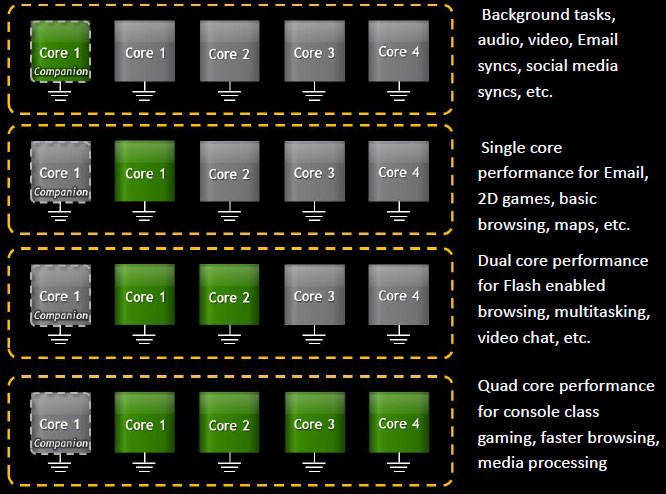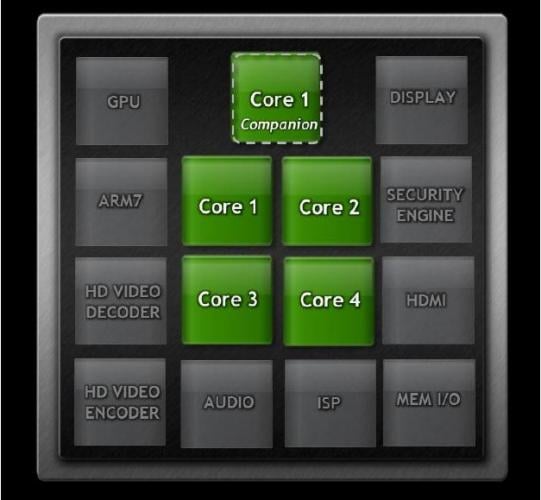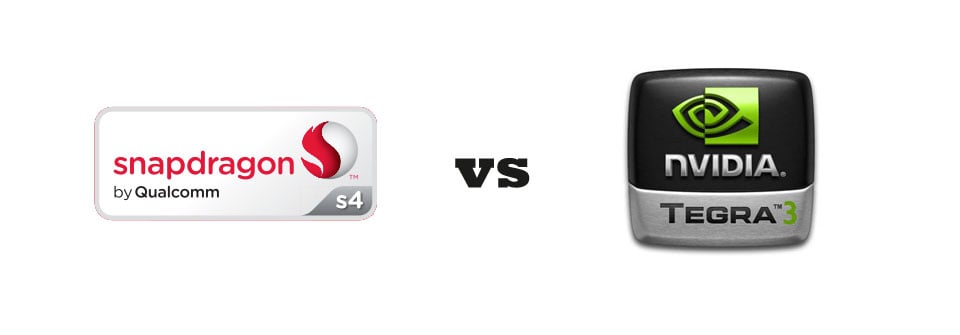Right now we are nearing the release of two new chipsets for Android devices, both of which are quad-core. Qualcomm S4 is slated for release sometime in 2012 while nVidia’s Kal-El (Tegra 3) Chipset will start appearing in tablets within the next couple of month while phones will start appearing in Q1 2012.
Qualcomm has been lagging behind in the multi-core chip wars for Android devices until recently when some of their dual-core chipsets have starting showing up in new devices. On the flip side, nVidia has had dual-core chipsets out for awhile now and quad-core tablets coming in the next few months. Some companies have already started showing off their supposed quad-core Tegra 3 tablets like the ZTE T98.
With both companies coming out with quad-core chipsets, we wanted to know what our readers were considering when it comes to their next Android device in terms of quad-core. Will you be picking nVidia’s Tegra 3 or Qualcomm’s S4? Before making that choice though, let’s look at some of the features each chipset will contain.
nVidia’s Kal-El (Tegra 3):
We recently posted some interesting news regarding the design of the upcoming Kal-El chipset which including a fifth companion core or low power operations. We won’t get into the gritty details of that here as they were already covered in that article but the short form of a description would be that for normal phone usage and things like phone idling, the quad-core chipset will shutdown and these low power operations will be handled by the companion fifth chip. When you need to do some high powered stuff on your device such as playing high-end games or a lot of multitasking, the companion chip shuts down and the quad-cores take over. With that said, battery life will be greatly improved since all cores won’t be running while the phone is idling or while you happen to be just talking on the phone.

Tegra 3 is also slated to be somewhere in the neighborhood of being 5-10x more faster than the Tegra 2 chip and will feature a 12-core GPU to handle all the gaming and graphics you throw at it. Each of the four (five if you include the companion chip) will run on their own depending on the need for power while using your phone as seen in the diagram above. This means that even though you may need more juice for some applications, it won’t use all four cores unless it is absolutely needed such as with heavy gaming.

Tegra 3 is a vast improvement when it comes to what Tegra 2 currently offers and considering nVidia is always ahead of the curve when it comes to chipsets for Android, Tegra 3 devices will be a solid choice for power-users, and soon the average user, when it comes to upgrading from your current device.
Qualcomm’s S4:
Qualcomm has been playing catch up with nVidia when it comes to chipsets for Android devices with their first major step towards performance being their single-core chip with the Adreno 220 GPU tacked onto it. We say this is the first major step even though the Adreno 205 is found in the Xperia Play simply because the Adreno 220 shows that Qualcomm is looking at boosting performance and trying to compete with nVidia’s dual-core chip with a single-core setup.
Recently Qualcomm has been pushing harder in the processor area with newer Android devices sporting a dual-core chipset with speeds up to 1.5GHz coming from Qualcomm. Although still not as abundant as the Tegra 2 chip currently is, it is a step in the right direction for Qualcomm if they are to compete with nVidia in any sense of the word. However, it seems as though the dual-core battle was an afterthought for Qualcomm as they are already getting ready to push out their quad-core S4 chipset which will sport speeds between 1.5GHz-2.5GHz.

This new chipset will boast a 60% increase in performance over current Qualcomm chips found in Android devices. It will also come integrated with 3G/4G/LTE world and will be rocking the new Adreno 225 GPU which apparently will be 50% better than the 220 currently running around right now in Android devices. The S4 will also come with a similar structure for power saving and prolonging battery life called asynchronous symmetric multiprocessing (aSMP) which will balance power consumption depending on what you are currently doing with your phone. This will allow each core to run at it’s most efficient and cores not in use to shut down completely until they are needed without the use of a companion core which is found in the Tegra 2 chipset.
Unfortunately, we have no real idea as to when we will see the S4 chipset start making it’s way into devices aside from “in 2012” whereas we already know when Tegra 3 devices are going to start showing up.
So the question of the day is, what chipset are you more interested in, the Qualcomm S4 or nVidia’s Kal-El Tegra 2 chipset? We’ve even included a fancy poll below to let you pick which one but definitely leave a comment below with your opinion on which one you will prefer in your future Android device. If you want more detailed information on both chipsets you can read Qualcomm’s new whitepaper about the S4 SoC and also head over to nVidia’s site and read the two new Kal-El whitepapers here and here. All three are in PDF form.
On a side note: While this is more of a personal opinion or prediction if you will, I believe that hardware fragmentation is slowly coming to an end. Within a year’s time most devices will be dual-core, regardless of what company’s chipset it is, while within two years time dual-core will be fading and most devices will be quad-core which is when the playing field will really start to level out in terms of hardware unless of course we see even more cores introduced by then.
{module 191}





